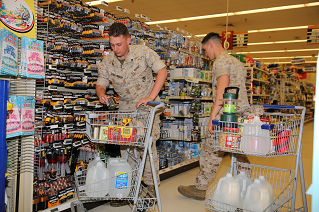
Building emergency kits can seem like a daunting task. You can build a kit all at once or build it over time, selecting items to buy each time you go shopping. You may already have some items around the house you could gather as well. Consider creating a build a kit treasure hunt for your children on a rainy day.
Bottom line—having all your supplies in a single location in your house that everyone, young or old, can locate and access means you will have what you need, when you need it.
150402-M-ZZ999-1318